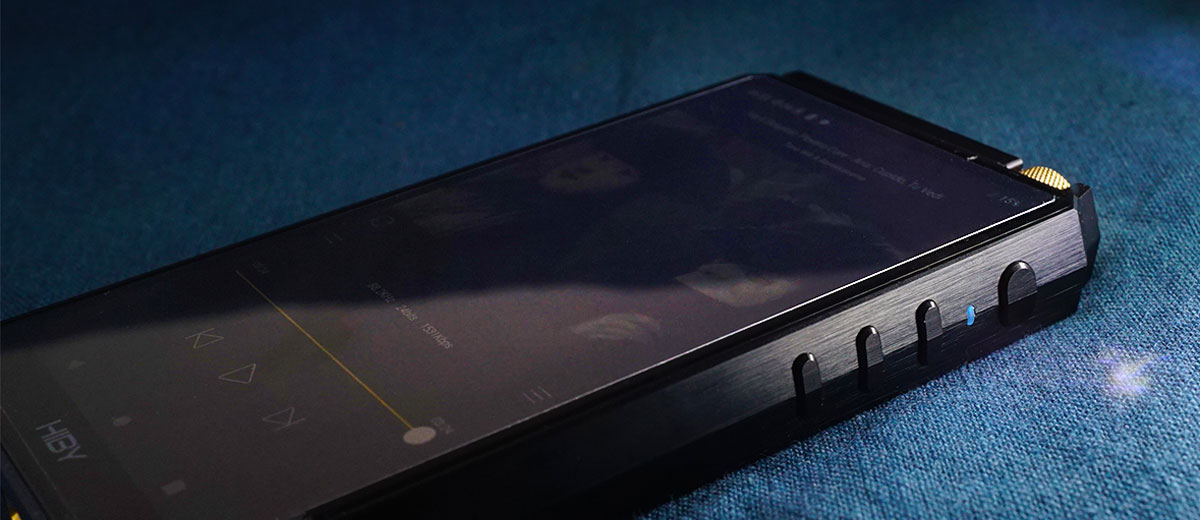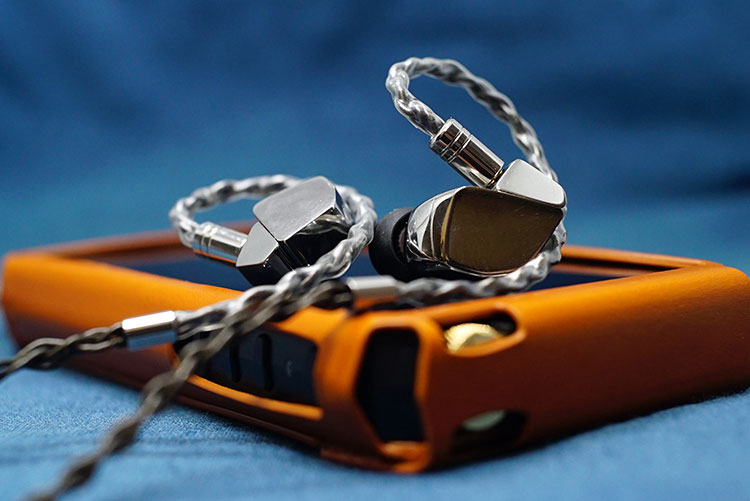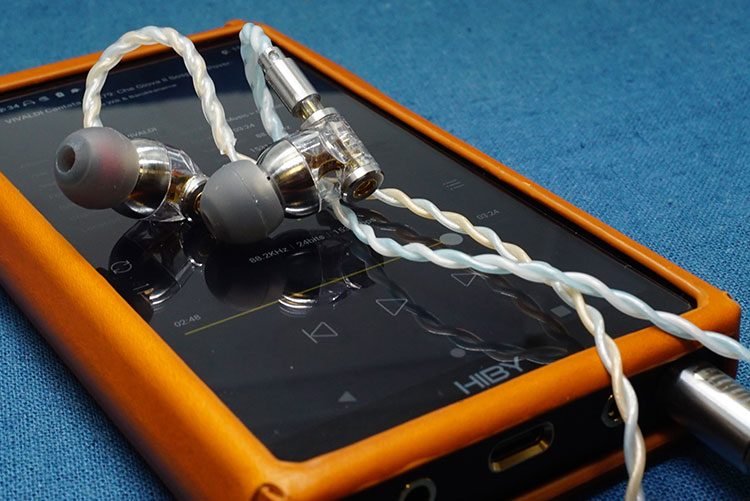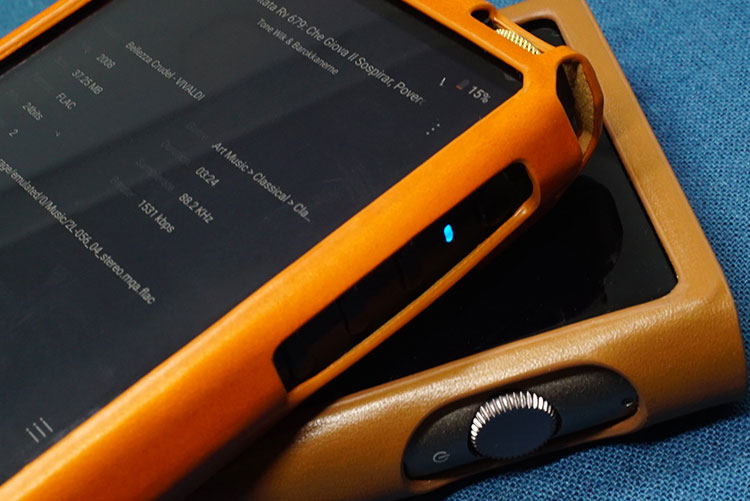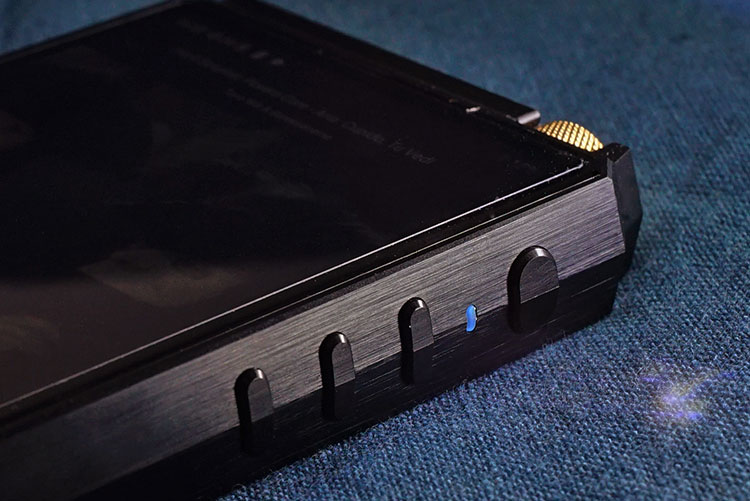Wireless Performance
WiFi
With the sleeves off I feel like the WiFi performance is quite similar to my main router, but somehow because of the newer chipset or faster SoC, it seems like the new R62020 is much faster loading websites and the streaming apps UI.
Getting away from the router the new R6 2020 receives a better signal than the R6 Pro. I’m not sure if it is the casing but the new R6 2020 is certainly better here.
My streaming experience through apps and DLNA is similar to Marcus’s findings with the R8 which is based on nearly identical hardware and software, you could visit his review here if you want to learn more.
BitPerfect & MQA
Platform-wide SRC bypass has become quite a standard feature for higher-end DAPs and HiBy has further pushed the bar with the MSEB add on and up to MQA 16X unfolding that will let you stream some songs at 32BIT/384kHz on TIDAL/Qobuz.
With unfolding in action you can definitely hear some difference in smoothness and density, and I guess no music lover will say no to this tech if it doesn’t come with a high cost.
I originally thought this function may be cut down on the new R6 but HiBy chooses to keep all these features from R8, just the features alone are worth the attention and I am happy to tell you the actual effect is quite impressive.

Bluetooth
The R6 supports Bi-directional receiving and transmitting as well as operating as remote control over the HiByLink connection.
LDAC and their own UAT technology are available of course and you could connect different TWS, dongles, and receivers with it or use it as a receiver. With the W5 BT dongle from HiBy, you can enjoy an even higher sampling rate than with LDAC.
The strength of the BT signal is also quite a bit enhanced from the original R6 Pro which drops much earlier.
Bluetooth Audio Quality
Back then I didn’t quite believe the Bluetooth chipset would make a big difference but with recent upgrades on various receivers and DAPs, I have confirmed the performance can really be better with a good implementation.
The Bluetooth playback quality on the new R6 2020 is audibly better than the old R6 Pro, being more dynamic, resolving, and airy while the older DAP sounds flatter and duller.
The MSEB option is also very usable when connected to some TWS/headphones that sounds fat and congested in the bass. A 1-minute tweak will make media content viewing much more enjoyable and achieves much more headroom.
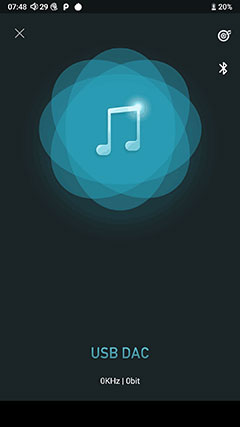
Wired Performance
USB-DAC
Plug straight into your laptop, press the USB connection option on the drop-down menu and you are ready to use the R6 2020 as a DAC.
Supporting different music players software and basically all codecs in your library including MQA, the USB-DAC mode works like any other desktop DACs. The sound output quality is similar to onboard playback and there is very little latency so you can use it for Netflix. Additionally, you can use it as a transmitter for your other TWS or receivers whilst in USB-DAC mode.
USB OTG
If you are familiar with the HiBy App it actually is one of the very few that reads your external storage device into its library just like the internal card reader.
Connecting to an external DAC will be a more common option and it works seamlessly. The USB-C connection also works as a coaxial output with a supplied cable so that you can connect to other higher-end DACs or a home system.
Synergy
Noise
Hissing and interference were an issue on the R6 Pro alongside high output impedance on the original but many of us have forgiven it for the sake of its high output performance.
Coming to the newer generation R6 2020 all these problems are gone. This newer iteration has achieved a very quiet background for low impedance, sensitive IEMs like the Shure SE846 while keeping high power in the output.
Both SE/BAL outputs sound much quieter while being more dynamic with low impedance IEMs. With the balanced output, a very faint hiss is inaudible when any songs set in or are similar to the background noise in the track.
The R6 2020 is best paired with dynamic IEMs and Hybrids and in most cases, they are completely quiet in the background with all gain on SE/BAL connection.
Pairings
Being quite loyal to the Saber chipset’s uncolored character and high detail retrieval power in the output, the R6 2020 is friendly with a wide range of IEMs.
The synergy is best with expressive IEMs that are well textured or colored in the lower-mids. Most of the dynamic IEMs and hybrids as well as some higher impedance IEMs are favored, particularly IEMs that aren’t too strong in the very high frequencies and more forward with the mids.
Oriveti OH-500 & OH-300
This combo achieves a good balance and a smooth vocal performance. There is sufficient current on the R6 2020 ensuring the dynamic driver on the OH-500 sounds dynamic and punchy in the mid-lows. The treble is exciting but controlled creating an engaging contrast with rich detail for most genres.
Switching to the lower end OH-300 from the same manufacturer, the combo is stronger in color, more mid-centric, and characterized in the vocal part when the treble is rolling off faster. The same applies to other IEMs that need more treble detail to sound expansive and smooth.
Final B1
Moving on to the test with the Final B1 on, there is some good power to bring the bass driver alive, and the character of B1 is very clear on the R6 2020, where every instrument is highly separated and textured with a solid bass punch.
This works well for genres like Hymns recorded in a church, less colored vocal works, in general, will sound very smooth and extended. With pop/jazz or male vocals, I would recommend tuning up the low-end for more body but it depends on what you want to achieve with the output.
The cooler signature on stock settings actually does some vocals justice, for example, Axl Rose and some higher pitching. Hoarse-voiced vocalists sound exceptionally transpicuous penetrating through the higher frequencies.
HiBy Seeds II
With HiBy Seeds II the mid lows get good texture and the same agile, light impacting performance. This seems to be quite a good match as the kicks are firm and the bass gets a lot of juicy detail.
The treble brightness is just right with some fast-bowing violins, yet it never peaks, working well for clean, light vocals as well. The vocal imaging is still positioned slightly off and that gives grander vocal works more space, rendering an open yet relaxing presentation with nice smoothness in the higher register.
DDHIFI Janus
The DDHIFI Janus displays a very different signature. With a sweet spot is at a higher volume you will get a big and punchy bass response. This works quite well with streaming content let’s say pop from VEVO on my YouTube playlist.
On some other players, the treble on the Janus is quite rounded and M-shaped while the R6 2020 is giving it a good push to add crispness and sparkle, textured as well to make it sounds faster and tighter in the upper register. Again, the mids are quite soothing and relaxing here after some small EQ tweaks, easy-going with an adequate definition.
Unless the IEM is very lean in the lows and highs or very uncolored, the pairing with R6 2020 will easily yield a satisfactory result. Dynamic IEMs or hybrids are more likely to sound richer and full in the low end and multi-BA IEMs with higher impedance can also be handled with good authenticity.
With most IEMs I recommend a small boost in the 250Hz range and to tune down the overall temperature in the MSEB menu to open it up.
Select Comparisons
HiBy R6 Pro
Performance
Although both machines are code-named R6, the new R6 2020 actually outperforms the original R6 and R6 Pro in many respects, while the output power measures the same.
The noise floor with sensitive IEMs is pressed down so as the better output signal allows the R6 2020 to be paired nicely with many more IEMs, sounding as dynamic but with a much darker background, higher resolution, and treble control.
Channel separation is noticeably enhanced so the imaging has improved over the older Pro Edition. The vocal on the R6 2020 is slightly less forward but cleaner. The bass punch is also cleaner with the staging noticeably wider on the R6 2020 than on the R6 Pro.
With more microdetails uncovered in the bass and a more delicately controlled treble, I would consider the R6 2020 an overall brushed up version of the R6 Pro in sound with some similarities in the tuning from the ESS chipsets.
Technical
The R6 2020 is simply much faster with an improved Snapdragon CPU inside and fresher with Android 9 installed. The new R6 2020 will get you all the up-to-date Bluetooth connectivity functions and cover all the Codecs you will possibly need. You also get an improved MQA 16X unfolding support and platform-wide MSEB with an improved screen experience.
All these complete the package and perform technically stronger. If you are using the R6 Pro migrating to the R6 2020 will be a familiar but totally upgraded experience.
Shanling M6 pro
$759
Performance
The Shanling M6 Pro uses an AKM AK4497EQ in a dual configuration for decoding, with a lot of work around its amping session which gives it a lot of energy in the kicks and decent dynamics throughout all frequencies it plays.
Compared with a few different earphones the M6 pro has strong mid-bass and treble texture, a natural presentation with its stock tuning and slightly more forwardness in the mid-bass, also swift articulation in the upper mids.
The R6 2020 is more out of the head with wider staging, focusing on the upper treble, resolution and delivering a smoother signature, and displaying a more vivid, lively signature.
On balance you get 600mW max on the M6 Pro and 750mw on the R6 2020. You can feel the bass being airier on the R6 2020 and synergy-wise the M6 Pro has higher control and dynamics with the R6 2020 working best with IEMs that are more mid-centric or textured in the bass, ones without elevated treble in the tuning.
You can feel a stronger house sound which gives the vocal more authority and body on the M6 Pro while the R6 2020 has a more vibrant, faster decaying timbre as well as more room for user-tuning. The MSEB options will unveil the true potential of the R6 2020 and with the proper tweaks, you will achieve a lot more than what the stock tuning offers.
Technical
The M6 Pro is never laggy with 4GB ROM onboard, however, the system experience is, newer, more responsive, and complete on the R6 2020 that packs in the latest Android OS and a much faster controller. The R6 2020 is much more future proof for web content and APK support compared to the M6 Pro.
In contrast, the M6 Pro has a Prime mode for dedicated music replay which forces kill other apps in the background, also there are more custom options that let you quickly toggle the gain and other settings which are actually much handier.
If you are a heavy BT user you may want to know the M6 Pro is limited to BT4.1 compared to the R6 2020 BT5.0 which offers a longer range with a stronger signal.
The Full HD screen on the R6 2020 has a better pixel density, displaying more information at ease with its higher resolution but considering the M6 Pro is more of a dedicated audio player, the screen is more than satisfactory and as sharp and responsive under sunlight.
FiiO M11 Pro
$649.9
Performance
From official data, the M11 Pro measures ≥550mW 4.2V @32Ω load with ≥119dB SNR and the R6 2020 scores 750mW 4.9 Vrms and 123dB SNR.
This is consistent with the output where you can feel a stronger swing on the R6 2020. Noise control level is similar on the two DAPs and with most IEMs you will get quite a quiet background even at Turbo gain, helping higher dynamic range to be achieved.
The M11 Pro has an additional 2.5mm output but let’s use the 4.4mm output which is the strongest on paper to compare to the R6 2020. The first thing you will notice switching from the FiiO to the HiBy is the wider staging with more instrument separation.
Putting them side by side the M11 Pro sounds more neutral, having more control over the vocals, and sounds more delicate in the signature. With Turbo gain on the R6 2020, there is better mid-bass density than the M11 Pro with the highest gain on, also more sparkle and air.
The M11 Pro is more linear in its response with a slight warmth in the mid lows while R6 2020 is quite a bit more aggressive with its mid-lows, slightly leaned to the treble, and some more exciting presence in the upper mids.
Technical
Both M11 Pro and the R6 2020 use 14nm processed controllers but the Qualcomm Snapdragon 660 on the R6 2020 is 1.5x faster than the Samsung Exynos 7872 on M11 Pro, reflected by Antutu measurements.
The stronger hardware also allows the R6 2020 to unfold MQA by 16x factor than the 8x on M11 Pro. You can feel the speed difference when scrolling fast in different apps, while internet browsing speed is also faster on the R6 2020.
Coming also with a large screen to body ratio, masculine design, and a physical volume knob, the M11 Pro houses dual AK4497EQ 32-Bit DAC and 2 x LMH6644 in its amping path, offering max 550mW in the balanced output.
The screen on the R6 2020 is sharper and slightly more pixel-packed than the M11 Pro but I won’t say the M11 Pro is lacking. The R6 2020 screen feels a little bit more vibrantly colored than on the M11 Pro and supports double-tapping to wake also an invert color mode from the drop-down menu, which makes it easier to read in some occasions.
The Bluetooth version is 4.2 on M11 Pro and 5.0 on the R6 2020, which is more power-efficient and covers a much longer range on paper. The Bluetooth signal strength on the R6 2020 is really stronger and stays in connection without stuttering for a longer distance when tested.
Software
Similar to the M6 pro’s case the M11 Pro uses Android 7 compared to R6 2020’s Android 9, which is much more future-proof than the M11 Pro version especially for the upcoming secured web support.
The drop-down menu is more furnished on the M11 Pro allowing users to tweak gain/filtering options so that you don’t need to go into the settings every time and there is also an extra pure music model.
Our Verdict
With the fastest CPU in the market, a highly innovative and user-friendly DSP, the latest MQA unfolding capabilities, also neutral tuning with ample power, HiBy is showing their determination in resetting the bar naming this firmly outlined new machine after their first release.
The design, size, overall performance, and set of features makes it a real all-rounder perfect to be carried around. The new R6 2020 is more complete than any other DAP at this price point in terms of OS experience with awesome matchability pairing with entry-mid tier IEMs, delivering tons of details especially in the treble over a dynamic and delicate tuning.
No matter if you stream, use the player with other DACs, or as a USB DAC, the experience is top-notch and a very responsive future-proof system.
HiBy R6 2020 Specifications
- Operating system Android 9.0
- SoC Snapdragon 660
- CPU architecture 8x Kryo 260 cores
- CPU speed of 2.2 GHz
- GPU Adreno 512
- DAC ES9038Q2M x 2
- WiFi Supports 2.4GHz, 5GHz
- Bluetooth Bluetooth 5.0
- USB USB 3.1
- Display size 4.97 inches
- Display color 16.8 million colors True Colour
- Display architecture IPS
- Resolution 1920*1080
- Density of 443 PPI
- Touchscreen Multitouch
- RAM 4GB
- Internal storage 64GB
- External storage Up tp 2TB + via 1 micro SD card
- Color choices Silver/black
- Body material Aluminium alloy
- Dimensions 130*73*15 mm
- Weight 235g
- Power source 5V⎓0.5A / 9V⎓2A
- Battery size 4500mAh
- Charging time About 3 hours
- Firmware upgrades OTA (over-the-air) online updates
- Font size Adjustable
- APP third-party applications Unlimited installation

